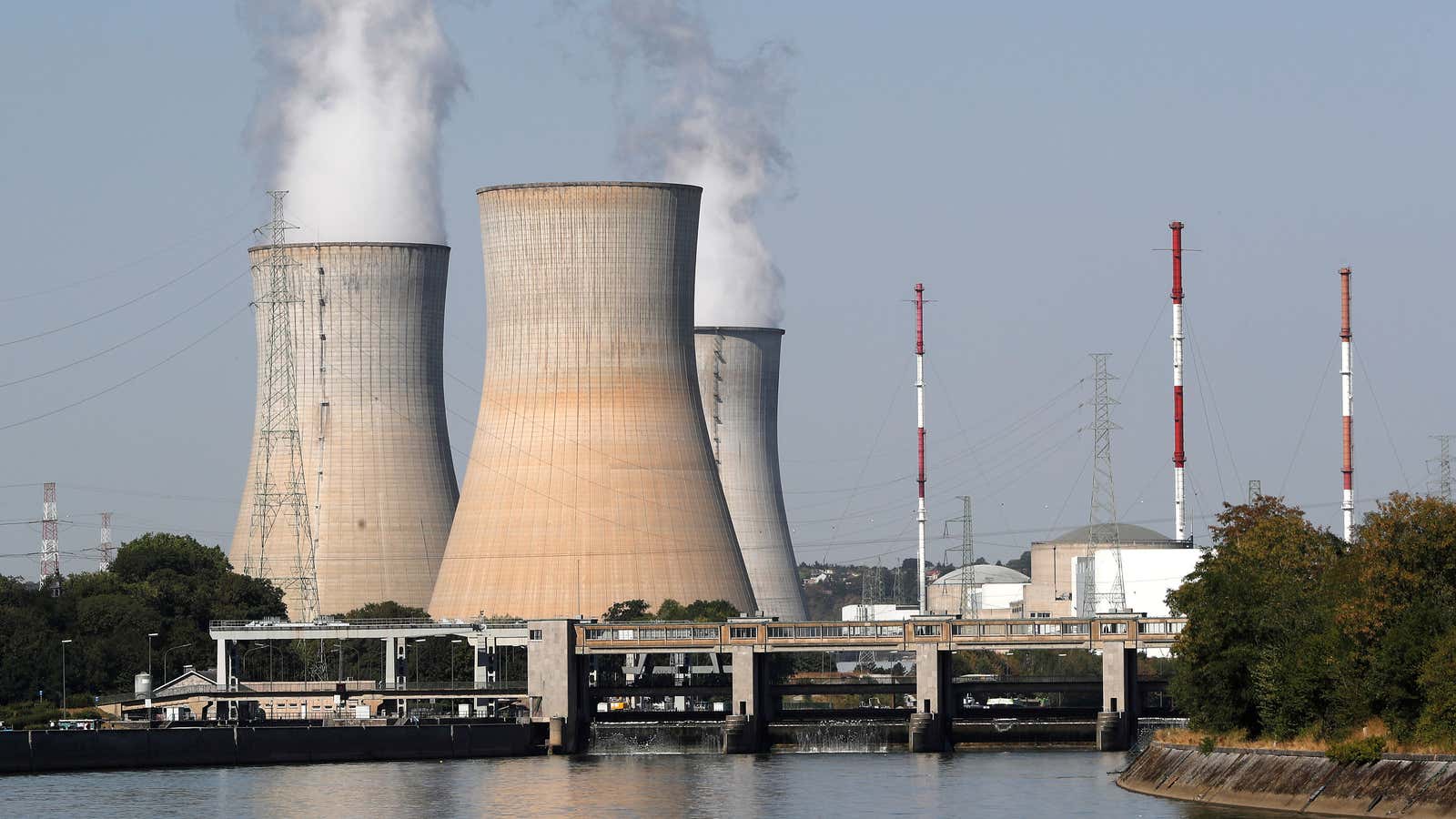You’re likely within a few feet of an electric switch. When you turn it on, some power plant many miles away starts producing the electrons your device needs.
Despite the growth of renewable-energy solutions, most of those electrons are still generated by fossil fuel or radioactive fuel. The trouble is that thermal electricity generation—a category that includes coal, natural gas, and nuclear power—doesn’t just require fuel, but also water. And a lot of it.
In the US and Europe, more than half of the water drawn from nature is used for power generation. This year’s heatwave has forced some of those power plants to shut down.
As Quartz previously explained:
Thermal power plants use high-temperature steam to turn turbines, which convert heat energy into electricity. In the process, the steam’s temperature falls, so it can no longer be used efficiently to move the turbine again. To raise its temperature back up, the steam first needs to be condensed into water, because liquids absorb heat better than gases. The condensation is achieved by using cooling water drawn from rivers, lakes, or seas, which is then dumped back at a temperature that is safe for wildlife in those waters.
The amount of water needed to produce electricity varies by the type of fuel, power-generating method, and cooling method used. A 2012 review looked at past studies to find an estimate, and its results showed a huge range: between 0 gallons (for sources like solar and wind) to 60,000 gallons for each megawatt-hour (MWh) of electricity produced (for sources like nuclear and coal).
Let’s pick the cooling tower, which condenses steam to water using cooler water drawn from the environment, as our method of choice. Here are the median figures for how much water is consumed by different types of thermal power plants to generate electricity:
It’s worth noting that some of the energy sources in the chart above are not like the others. Concentrated solar and geothermal contribute less than 1% of the world’s electricity, whereas coal, natural gas, and nuclear contribute more than 75%.
To be sure, the water used for cooling is sent back to the environment. A tiny fraction of it could get contaminated with chemicals, but mostly the harm comes from hot water’s effect on wildlife. If the water is too hot, it can kill plants and fish.
Non-thermal sources of electricity, such as hydropower, wind, and solar, don’t consume water for cooling. But again, one of these sources is not like the others. Hydropower works by using water itself to turn turbines and generate electricity, and it should be no surprise that it uses a lot of water, too: 4,500 gallons per MWh (median figure).
The usage mentioned so far doesn’t include the water needed to extract fuels or build the power plant, both of which can add substantially to the water footprint. Even after including the total water use in the process of power generation from building to operating a power plant, it is generally true that the use of solar power and wind power don’t just cut greenhouse gases but also water use.
